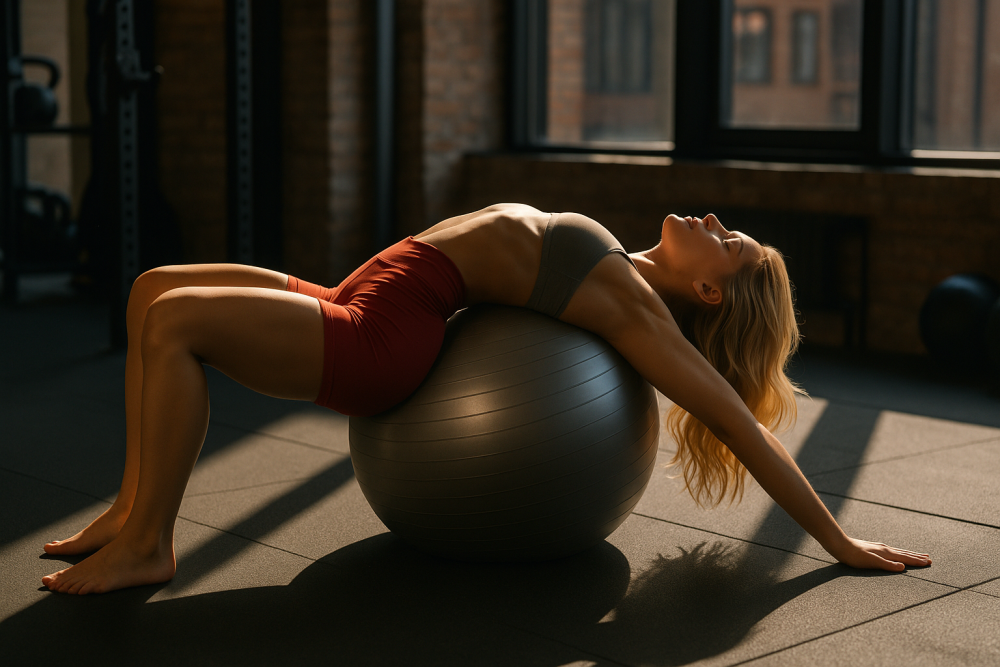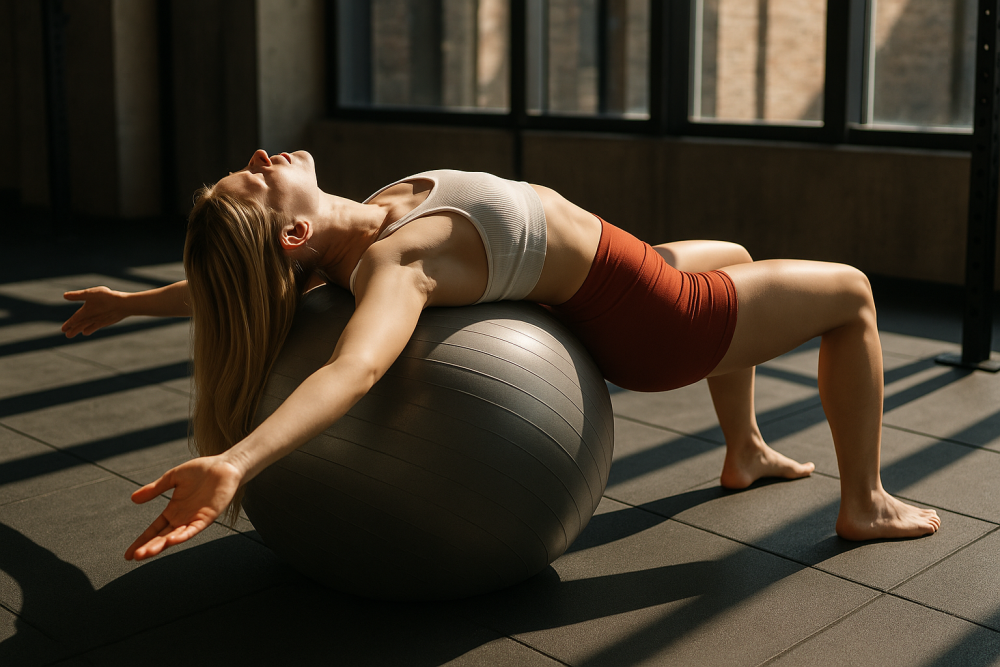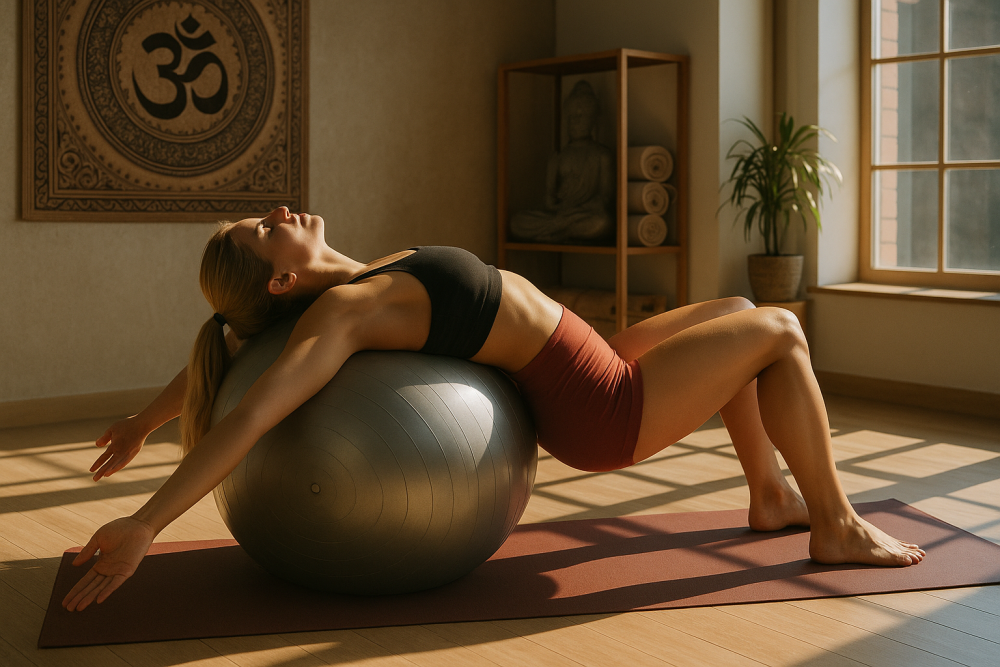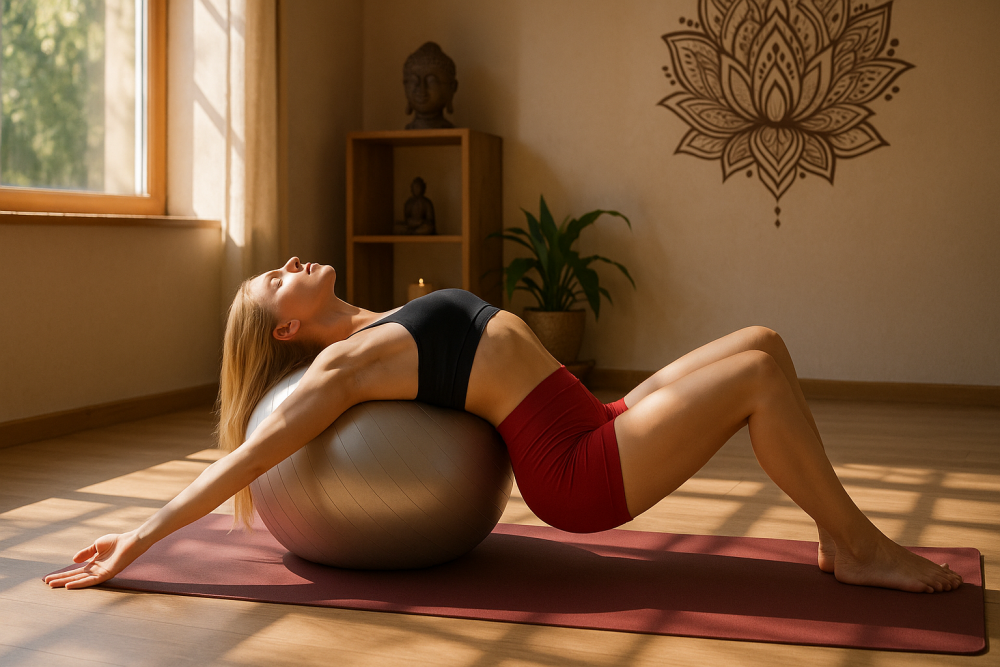Contents
- 1 Ball Chest Stretch
- 2 Open Your Chest and Improve Posture with This Simple Exercise
- 3 Benefits of the Ball Chest Stretch
- 4 Recommended Sets and Duration
- 5 Step-by-Step Guide: How to Do the Ball Chest Stretch
- 6 Ball Chest Stretch Variations
- 7 Ball Chest Stretch Tips and Recommendations
- 8 Final Thoughts
- 9 Related
Ball Chest Stretch
Open Your Chest and Improve Posture with This Simple Exercise
The Ball Chest Stretch is a gentle, effective way to open up the chest, improve posture, and relieve tightness in the shoulders and upper back. Whether you spend long hours at a desk, work out regularly, or just want to improve your flexibility, this stretch can help you feel more open and energized. Using an exercise ball adds stability and support, making the stretch both comfortable and deeply effective. In this guide, I’ll walk you through the benefits, how to perform the stretch step by step, some variations, and tips to get the most out of your routine.

Benefits of the Ball Chest Stretch
- Improves Posture and Reverses Rounded Shoulders
By targeting the pectoral muscles and front deltoids, this stretch helps correct the forward-shoulder posture caused by prolonged sitting, computer use, or phone scrolling. It encourages proper alignment of the shoulders and upper spine, supporting a straighter, more confident stance. - Increases Chest and Shoulder Flexibility
The Ball Chest Stretch promotes elasticity in the chest, shoulders, and anterior deltoids, enhancing your overall upper body flexibility. This is particularly beneficial for exercises that require overhead or pushing movements, such as bench presses or yoga poses. - Relieves Muscle Tension from Sedentary Habits
Tightness in the chest and shoulders is a common issue for those who sit for long periods or maintain a hunched posture. This stretch helps release built-up tension, providing immediate relief and long-term mobility improvement. - Expands the Chest Cavity for Better Breathing
By opening up the front of the body and gently stretching the intercostal muscles between the ribs, the Ball Chest Stretch allows for deeper, more effective breaths. This improved lung capacity can aid both relaxation and athletic performance. - Supports Post-Workout Recovery
After intense upper-body training, such as weightlifting or push-up-heavy routines, the chest muscles can become tight and sore. This stretch encourages blood flow to the area, helping reduce soreness and accelerate muscle recovery. - Enhances Upper Body Range of Motion
Incorporating the Ball Chest Stretch regularly can boost your range of motion during mobility drills, warm-ups, and workouts. Greater mobility in the shoulders and chest can translate to better performance in sports, calisthenics, martial arts, and daily activities.
Recommended Sets and Duration
Beginners: 2 sets of 20–30 seconds per stretch
Intermediate to Advanced: 3 sets of 30–60 seconds per stretch
Perform the stretch 2–4 times a week for best results

Step-by-Step Guide: How to Do the Ball Chest Stretch
- Position the Ball
Choose a stability or yoga ball that fits your height. Place it on a non-slip surface or yoga mat for stability. - Sit and Roll Down
Sit on the ball, then slowly walk your feet forward, letting the ball support your mid to upper back. Allow your head and neck to rest comfortably on the ball. - Open Your Arms
Extend both arms out to the sides at shoulder level (like a “T”). Let your arms relax down naturally, feeling a stretch across your chest. - Adjust Your Position
You can slide your arms slightly lower or higher depending on where you feel the most effective stretch. - Breathe Deeply
Take slow, deep breaths in through your nose and out through your mouth. Stay in this position for 20–60 seconds, depending on your comfort level. - Return Safely
To come out, walk your feet back until you’re in a seated position again.

Ball Chest Stretch Variations
- Arms in a “Goalpost” position: Bend your elbows at 90 degrees and stretch, targeting the upper chest more deeply.
- Single-Arm Ball Chest Stretch: Rotate slightly to one side and stretch one arm at a time across the ball.
- Wall Ball Chest Stretch: If lying on the ball feels uncomfortable, stand near a wall and place one hand on the ball, pressing gently as you rotate away from it to stretch the chest.
- Dynamic Ball Chest Opener: Gently raise and lower your arms while lying on the ball for an active mobility version.

Ball Chest Stretch Tips and Recommendations
- Always warm up before stretching—light shoulder rolls or arm swings help.
- Avoid overstretching—you should feel a gentle pull, not pain.
- Stay mindful of your posture throughout the day to reinforce stretch benefits.
- If you’re recovering from an injury or have shoulder issues, consult a professional before trying this stretch.
- For best results, combine with back and shoulder stretches like the Arm Circles or Lat Stretch.
Final Thoughts
The Ball Chest Stretch is a must-have in your fitness or recovery routine. It’s perfect for anyone looking to loosen tight chest muscles, enhance their posture, or reduce shoulder tension. With consistent practice, you’ll notice better alignment, improved breathing, and greater comfort in your daily movements. Incorporate this stretch a few times a week, especially after chest workouts or long days at your desk, and your upper body will thank you.
Follow our Social Media!












